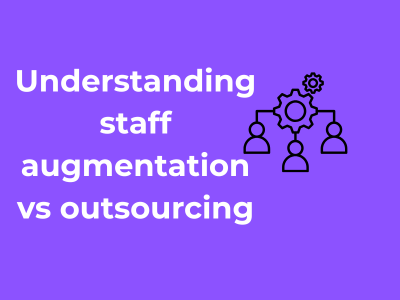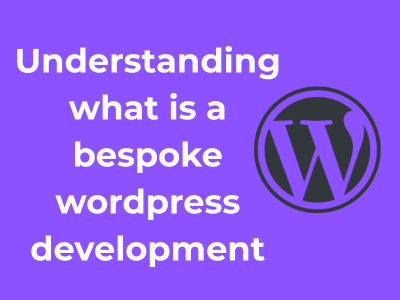Alright, let’s dive into the world of Staff Augmentation and Outsourcing. If you’re scratching your head over what these terms really mean, don’t worry—you’re not alone! These two models might sound similar at first glance, but they’re designed to address entirely different needs for businesses. Let me break it down for you in plain language:
What is Staff Augmentation?
Think of Staff Augmentation as the process of beefing up your existing team with extra talent that fills specific skill gaps. It’s like borrowing a few superheroes to help your team tackle an upcoming challenge. These professionals become part of your team for the duration of the project, working closely with you while you maintain full control over every aspect of the deliverables. Sounds pretty hands-on, right?
This approach works well for organizations that value flexibility and want to maintain control over the workflow. For instance, if you’ve got an urgent software development project but lack enough front-end developers, you can easily scale up your software development team by bringing qualified contractors on board through Staff Augmentation.
What About Outsourcing?
On the other hand, Outsourcing is a bit like delegating an entire responsibility to an external expert team. Here, you hand over a specific project, task, or process to a third party that takes care of it from start to finish. It’s a “set it and (mostly) forget it” approach, where the heavy lifting is done by the outsourcing partner.
This is a go-to option for tasks or projects that are outside your team’s core expertise or when you simply want to focus your organization’s energy elsewhere. For example, a company might outsource its customer service operations to a call center or contract out an e-commerce website build to a specialized agency.
The Key Differences in a Nutshell:
To make things crystal clear, here’s a quick summary of the differences between Staff Augmentation and Outsourcing:
- Control: With Staff Augmentation, you’re in the driver’s seat. Outsourcing, however, hands the steering wheel to the third party.
- Focus Area: Staff Augmentation complements your existing team for a specific skill. Outsourcing takes care of entire tasks or projects, often unrelated to your main operations.
- Engagement Level: Staff Augmentation requires constant coordination since these experts integrate into your team. Outsourcing is more of a hands-off arrangement.
Why Does Understanding This Matter?
Simplifying this decision-making process starts with understanding your business needs. Do you need a few extra skilled hands to get the job done while staying super involved, or are you looking to fully hand over certain tasks to experts and free up your time? Knowing these distinctions can save you from headaches when it’s time to deliver on deadlines.
Cost Breakdown: Where Your Budget Matters Most

Let’s talk money. When it comes to running a business or managing a project, budgeting tends to sit pretty high on the priority list, right? Whether you’re exploring staff augmentation or outsourcing, understanding where your dollars are going and how they’re working for you can make all the difference. So, let’s break it down in simple, digestible terms.
1. Direct Costs vs. Hidden Expenses
Here’s the deal: when you’re evaluating staff augmentation or outsourcing, the way costs unfold can look very different. With staff augmentation, you’re paying for additional talent—typically on a per-hour or per-project basis. A huge plus here is transparency; you know exactly what you’re paying for in terms of skills and hours worked. Easy, right?
Outsourcing, on the other hand, often operates on a project-based model, where you pay a flat fee or milestone-related charges. While this can feel straightforward, you’ll need to dig deeper into the fine print. Hidden fees sometimes lurk (think: project management overhead, revisions, or infrastructure charges). Always ask for an itemized breakdown, so you’re not hit with surprises later.
2. Short-Term vs. Long-Term Investment
Imagine this: you’ve got a short-term project that requires an ultra-specific skill set. Hiring through staff augmentation could save you from committing to a full-time employee while still completing the task at hand. You only pay for the expertise you need when you need it. It’s like renting instead of buying—a great choice for flexibility and short-term savings.
Now, if your project or business strategy leans more toward longevity, outsourcing might look more attractive. Some providers offer bundled or ongoing support, allowing you to streamline costs over a longer period. Worth considering if you’re thinking big-picture!
3. Infrastructure and Overhead Costs: A Sneaky Factor
A hidden gem of staff augmentation is that it integrates with your existing infrastructure. So, if you already have an office setup, tools, or software subscriptions in place, bringing in augmented staff won’t necessarily blow up your budget. Pretty sweet, huh?
Outsourcing, however, often means the external team provides their own tools, software, and workspaces. While this sounds convenient—no need to worry about extra desks or licenses—it sometimes results in higher project costs since a premium is built into their pricing to cover those resources. It’s something to weigh carefully depending on your current setup.
4. Scalability and Cost Efficiency
Scaling up or down is another spot where costs can fluctuate. Staff augmentation gives you room to shrink or grow your team whenever you like, with costs adjusting based on the exact number of skilled professionals onboard. It’s a cost-effective way to react to rapid changes or uncertainties.
With outsourcing, read the contract closely. Some agreements carry hefty fees for modifications or additional scopes of work. If your project is in flux, those could add up fast.
Flexibility and Control: Which Approach Gives You the Edge?
Have you ever wondered how much freedom and control you truly need when bringing additional talent into your business? Let’s dive into one of the most critical comparisons between staff augmentation and outsourcing: flexibility and control. Spoiler alert: the right approach hinges on your specific project needs and management style, so sit tight as we break it down.
Why Flexibility Matters
Imagine preparing for a sprint, and suddenly realizing your team is missing key expertise or there’s an unexpected crunch in resources. This is where the concept of flexibility in hiring models shines. Whether you’re scaling up for a temporary project or adapting to fluctuating workloads, having a clear understanding of flexibility benefits can significantly impact your project timeline.
- Staff Augmentation: Think of this as adding temporary muscles to your team. You get professionals who integrate seamlessly into your existing structure, working under your guidance. This approach gives you the ultimate flexibility to bring in specific skills exactly when you need them without committing to long-term relationships.
- Outsourcing: This, on the other hand, often involves delegating an entire chunk of work (or the whole project) to an external agency or team. It’s not as flexible when changes need to be made mid-way, since external teams usually follow agreed-upon contracts and guidelines.
Ultimately, staff augmentation provides a more agile solution if you expect the scope, size, or requirements of your project to evolve over time.
The Control Factor
Control freaks (in the best way possible) gather around, because how much say you have in day-to-day operations could make or break your decision here. Let’s tackle this from your perspective as a manager:
- With Staff Augmentation: You’re in the driver’s seat. After onboarding the extra team members, you’ll be the one assigning tasks, monitoring progress, and keeping everyone on track. If hands-on involvement is what you prefer, this approach guarantees you’ll oversee every detail.
- With Outsourcing: Think of it as handing over the car keys. Sure, you define the goals and the destination, but the steering and route decisions are largely out of your hands. The outsourcing provider will take responsibility for execution, which can free you up to focus on broader strategic goals instead.
In short, if maintaining control over workflows, strategies, and deliverables is your top priority, staff augmentation is your golden ticket. Outsourcing, on the other hand, works well for those who value convenience and trust external experts to take the lead.
Skillset and Talent Accessibility: A Closer Comparison

When it comes to finding the right people for the job, the choice between staff augmentation and outsourcing can feel like navigating a talent labyrinth. But don’t worry, we’re here to break it down in a friendly, approachable way so you can make the best decision for your team.
The Talent Pool: Who’s Available?
One of the biggest considerations is the scope of talent each approach gives you access to:
- Staff Augmentation: Think of this as adding a few experts directly into your team. This approach is particularly effective when you need specific skills for a set period without the commitment of hiring permanent employees. You’ll often work with professionals who are highly skilled and vetted, making it easy to fill knowledge gaps.
- Outsourcing: Outsourcing typically involves handing over entire projects or functions to an external company. This can give you access to an even broader talent network – often on a global scale. Need developers in one country and designers in another? Outsourcing can make it happen.
Specialized Versus Diverse Skillsets
Let’s dive into how each approach serves your skillset needs based on the type of work you’re handling.
- Staff Augmentation: Perfect if you’re looking for specialized skills on a project-by-project basis. This approach allows you to handpick experts to precisely match your requirements, giving you a tailored solution.
- Outsourcing: If your project demands a variety of skills – like a full-blown website redesign requiring designers, developers, content creators, and SEO experts – outsourcing might provide better synergy. With teams already equipped to work collaboratively, they can deliver cohesive results.
Talent Accessibility: The Global Advantage
We live in a connected world, so why not take advantage of the global talent pool? Here’s how each method stacks up:
- Geographic Flexibility: Both staff augmentation and outsourcing can provide access to global professionals. Whether you’re engaging a solo coder or an entire outsourced team, you’re not limited to local options anymore!
- Time Zones and Availability: Outsourcing teams often span time zones, which might mean your project progresses around the clock. Staff augmentation is a bit more localized, but you can still find remote talent to bridge the gap if needed.
Industry Know-How and Expertise
No matter your approach, the depth of industry expertise is critical. With staff augmentation, you gain more control over who joins your team, which protects the consistency of your company culture. However, outsourcing companies often bring their own proven frameworks and industry experience, which can save you from reinventing the wheel.
Risk Management: Balancing Responsibility and Security
Let’s talk about something every business leader and project manager lies awake worrying about: risks. Yup, managing risks is a headache, but it’s a non-negotiable when you’re deciding between staff augmentation and outsourcing. The good news? You’re not alone in this — let’s dissect how each approach handles risk so you don’t lose sleep again.
Understanding Risk in Both Models
Risk management revolves around two core factors: responsibility and security. But here’s where the roads fork for staff augmentation and outsourcing:
- Staff Augmentation: The Buck Stops With You
Okay, picture this — you’re bringing in skilled professionals to work as part of your in-house team. You’ll retain most of the control, but here’s the catch: you also carry the bulk of the responsibility. Whether it’s ensuring project deadlines, compliance with regulations, or keeping sensitive data airtight, the ball is in your court. Sounds heavy? It can be, but some leaders thrive on this level of control. - Outsourcing: Sharing Responsibility
Think of outsourcing like hiring a contractor to build your dream house. You provide the blueprint, budget, and vision, but the heavy lifting? That’s on them. However, shared responsibility isn’t a free pass. You’re trusting your outsourcing partner to deliver — and to protect your intellectual property. A solid contract and reliable vendor can make this partnership golden.
Data Security: A Crucial Consideration
Here’s where things get serious. In today’s digital-first world, data breaches and IP theft are more than buzzwords — they’re actual risks. So, how do the two models stack up?
- Staff Augmentation: Since the augmented staff works under your systems and security protocols, the security of your data largely depends on how robust your processes are. Pro tip: Treat your augmented team like full-time employees when it comes to training and compliance with security measures.
- Outsourcing: Outsourcing can seem riskier because external teams are handling your data. The solution? A solid Non-Disclosure Agreement (NDA) and vetting vendors with top-tier data protection measures. Don’t skimp on this—it’s worth the extra effort for peace of mind.
Mitigating Risks in Both Models
Now that we’ve unearthed potential risks, how do you tackle them head-on? Here are some friendly tips:
- Define Expectations Upfront: Clear communication is your ally. Outline project scopes, timelines, responsibilities, and expectations. The clearer you are, the fewer surprises along the way.
- Choose Trusted Partners: Whether you’re screening individuals for staff augmentation or vetting third-party providers for outsourcing, reputation and past client reviews are your best friends.
- Invest in Contracts: Seriously, don’t rush through the fine print. Robust contracts protect your business interests and ensure all parties are on the same page.
Scalability Insights: Adapting to Project Demands
Scalability—it might sound like a buzzword, but when it comes to your project’s success, it’s one of the most crucial factors to consider. Whether you’re building an innovative app or managing a complex IT system, being able to scale effectively can mean the difference between a smooth operation and a stressful headache. Let’s dive into why scalability is critical and how staff augmentation and outsourcing measure up in this area!
What Does Scalability Really Mean?
In a nutshell, scalability is the ability to adjust—up or down—based on project requirements. Need 5 extra developers next month? Great. Realizing you only need 2 for the following phase? No problem. Scalability allows your business to remain agile and cost-efficient without overcommitting resources (or your budget).
Exploring Staff Augmentation for Scalability
When you opt for staff augmentation, you’re essentially hand-picking talent to integrate directly into your existing team. This approach can make scaling seem almost effortless. Here’s why:
- Quick Adjustments: Need more hands on deck for a short-term project crunch? By tapping into a talent pool from trusted staffing partners, you can scale your workforce up or down quickly with minimal disruption.
- Custom Fit: Staff augmentation grants you the flexibility to bring in experts with very specific skills. This means you’re not forced into a pre-packed solution—you build your team according to your unique needs.
- Short-Term Adaptability: If your project demands fluctuate frequently (think seasonal spikes or a product launch sprint), staff augmentation accommodates these changes without locking you into long-term commitments.
However, you’ll need to make sure your internal team is ready to onboard and guide the additional hires efficiently. Invest in seamless communication and streamlined workflows to unlock the full potential of this scalable model.
The Outsourcing Approach to Scalability
Outsourcing, on the other hand, goes beyond simply adding manpower—it often involves handing over entire functions or projects to an external team or company. But how does it fare when it comes to scalability?
- Built-In Resources: Outsourcing companies typically come equipped with a full-fledged team ready to jump in. Scaling is often less of a logistical hassle since resource allocation happens on their end.
- Global Talent Pool: Partnering with an outsourcing provider opens the door to international expertise, making scalability almost second nature.
- Long-Term Expansion: If your project evolves into an ongoing or larger operation, outsourcing partners can provide the infrastructure and workforce needed for sustained growth.
The downside? Outsourcing might not offer as much granular control over scalability compared to staff augmentation. If you’re laser-focused on having complete oversight, this could be a drawback.
Finding the Right Balance
Ultimately, the best approach depends on your specific needs. Here are a few pointers to help you decide:
- Short-Term Needs: Lean towards staff augmentation for short-term, rapidly changing workloads that require high levels of control.
- Long-Term Projects: Consider outsourcing for projects with a broader scope and sustained demands that benefit from robust external support.
- Growth Potential: Assess whether you anticipate steady scaling or unpredictable fluctuations in resource requirements.
Choosing the Right Approach for Your Business Needs
When faced with the decision between staff augmentation and outsourcing, it’s natural to feel overwhelmed. After all, your choice might significantly impact your business trajectory, so it’s no small stake here! But fear not—let’s break this down in a way that makes things crystal clear and easier to digest.
1. Start by Assessing Your Project’s Unique Needs
Not all projects are created equal, and that’s where understanding the nuances of your business requirements comes into play. Ask yourself:
- Is this a long-term or short-term project?
- Will the project require niche expertise or a versatile workforce?
- How much control do I want to have over the team?
If you’re dealing with short-term tasks that require close supervision, staff augmentation might be your best bet. However, for larger, all-encompassing deliverables where your focus can remain on the bigger picture, outsourcing could be your golden ticket.
2. Align Decisions With Your Business Culture
Your company’s identity, values, and working style should influence your choice. For instance, if collaboration and daily oversight are your priorities, having augmented staff integrated into your in-house team could feel seamless. On the flip side, if you value results over processes and don’t mind delegating fully, outsourcing might fit like a glove.
3. Budget Isn’t Everything, But It Sure Matters
Let’s talk dollars without stress! Staff augmentation may come with higher per-hour costs since you’re procuring individual skilled experts, often akin to extending your own payroll. But the flexibility it offers can save you from over-investing in infrastructure or permanent hires.
Outsourcing often provides a more comprehensive “package ”—you’re paying for a team, tools, and management baked in one. However, beware of sacrificing transparency for cost efficiency—quality’s what really counts.
4. Think Long-Term: Scalability and Risk Preparedness
Here’s the thing: your needs today may change tomorrow. Staff augmentation is scalable without much friction, allowing you to bring on new members or release them as projects ebb and flow. Outsourcing partners may offer scalability in their scope; however, switching vendors mid-project can sometimes face challenges.
Speaking of risks—whether it’s meeting deadlines or handling intellectual property—your approach should be one that doesn’t leave you biting your nails. Always align with providers possessing reliable protocols for security and performance.
5. Seek Feedback and Advice
Don’t hesitate to involve your existing team or external advisors in the decision-making process. They may offer insights you hadn’t considered, based on their experience and perspective. Sometimes a quick conversation can shed light on the path forward!
6. Try a Trial Run
Why leap when you can tiptoe first? Many companies will allow you to start with a small trial project to evaluate compatibility. Whether opting for staff augmentation or outsourcing, this can provide “real-world” clarity without immediate commitment.
Making the Final Call
The secret sauce lies in your priorities, goals, and business context. Neither approach is inherently superior—it truly depends on aligning your choice with what works best for you. Stay true to your strategy, focus on results, and embrace the journey. And hey, regardless of the route you choose, remember: you’re investing in growth, and that’s always worth celebrating.











